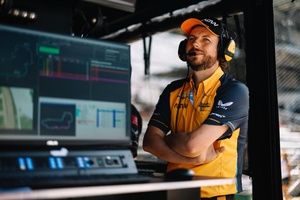
Formula 1's brewing tyre dilemma
Pirelli wants to stay in F1, and there are plenty of reasons why the FIA, the teams and FOM want it to as well, yet extending its contract beyond 2013 is not that simple, as Dieter Rencken explains

Pirelli entered Formula 1 in 2011 as sole tyre supplier, having departed at the end of 1991 following two marginally successful tenures (1981-86, 1989-91) in the modern era during which the Italian company scored two and one (slightly fortuitous, it must be said) victories respectively.
Share Or Save This Story
More from Dieter Rencken

Vettel: Last Ferrari step back to winning F1 titles will be hardest

Revealed: What F1 teams really spent in 2017

Aftermath of Hamilton Baku clash Vettel's 'worst feeling' of 2017

Why F1 is sitting on a timebomb of contradictions

Lewis Hamilton hopes Fernando Alonso is in 2018 F1 title fight

How teams lost patience with F1's new era

Michael Schumacher doubted himself, reveals ex-Ferrari F1 boss Todt

Why Todt's reign is eight years longer than planned
Latest news

The plot twist that gave Arrow McLaren’s Ward his first IndyCar win as team principal

Formula E’s new Gen3 Evo car breaks cover

The weekly reality check that has kept MotoGP hype off of Acosta so far in 2024

F2 veteran Ghiotto to make IndyCar debut with Dale Coyne Racing at Barber
Autosport Plus

The F1 hero to zero dividing line that has never been so thin

How Stroll and Magnussen revealed the scale of F1’s racing and rules problems

Did F1's new sprint format work?

Chinese Grand Prix Driver Ratings 2024
Subscribe and access Autosport.com with your ad-blocker.
From Formula 1 to MotoGP we report straight from the paddock because we love our sport, just like you. In order to keep delivering our expert journalism, our website uses advertising. Still, we want to give you the opportunity to enjoy an ad-free and tracker-free website and to continue using your adblocker.
You have 2 options:
- Become a subscriber.
- Disable your adblocker.

